Chinese Money Plant Care: How to Grow Pilea Peperomioides
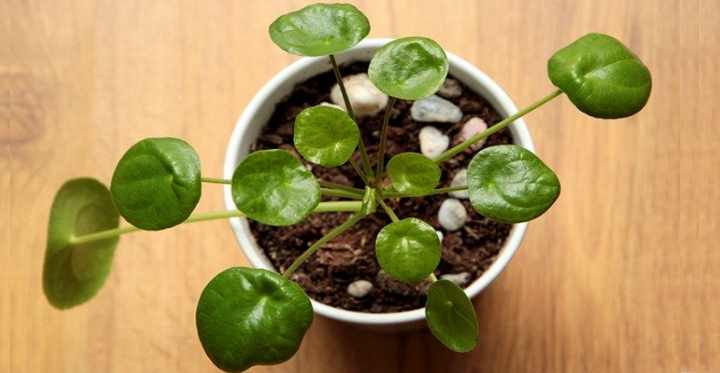
The Chinese money plant (Pilea peperomioides) is a popular houseplant that is very easy to care for. With its pancake-shaped emerald green leaves and delicate stems, these plants can grace any interior. Also called the UFO plant, missionary plant, and pancake plant, this auspicious flowering plant is said to bring wealth and fortune to its owners.
How to care for a Chinese money plant: The Pilea peperomioides thrives when grown in bright indirect sunlight, well-draining potting soil, and high humidity. Keep the indoor temperature between 60°F and 75°F (15° – 23°C), water when the top 1” (2.5 cm) of soil is dry, and fertilize monthly during the growing season.
The Pilea peperomioides is native to China, where it grows in shady forests. This plant, with its flat round coin-like shaped leaves, is from the family Urticaceae and genus Pilea. Growing outdoors, it can withstand temperatures as low as 50°F (10°C). Although this is a popular houseplant, it is rare in the wild. Its love for high humidity and warmth means that the Chinese money plant is excellent for closed terrariums.
The striking feature of these “pancake plants” is their shiny large circle leaves and thin, dainty stems. The long stems can grow up to 12” (30 cm) long, and the round leaves can be up to 4” (10 cm) in diameter. Chinese money plants are also fast growers when placed in a bright indoor location and receive proper care. If you’re lucky enough, the UFO plant will bloom with clusters of tiny white flowers on pink stems.
In this article, you will learn how to look after this low-maintenance indoor plant. At the end of the article, you can find out some care tips to ensure your Pilea plant grows well.
How to Care for Chinese Money Plant (Pilea peperomioides)
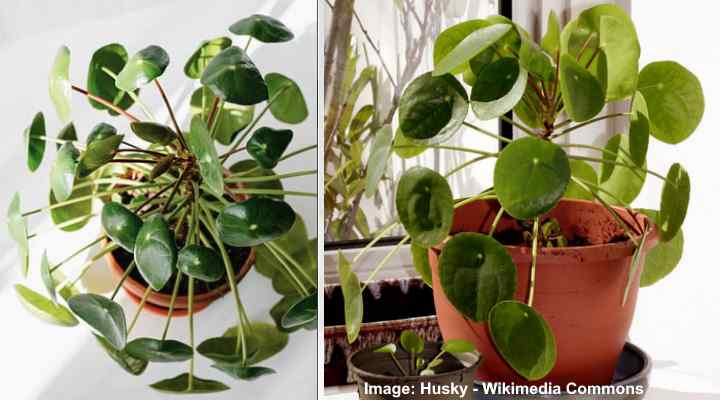
The Pilea peperomioides plant came originally from China and has flat circle leaves like coins, hence its common name the “Chinese money plant”
Pancake plants are not fussy when it comes to care. However, there are a few things to keep in mind when growing these plants at home. The three essential care requirements for Chinese money plants are:
- Adequate light, but shielded from direct sunlight.
- Moist soil that doesn’t get too damp or soggy.
- High humidity levels of at least 50%.
Chinese Money Plant Light Requirements
Chinese money plants need plenty of bright, indirect light to thrive. Place on an east-facing windowsill where it only gets some morning sunlight. Protect the Pilea from direct sunlight to avoid scorching the leaves. When these plants grow in low light environments, they grow long, leggy stems and lose their attractive appearance.
Growing a Chinese money plant in a bright location will ensure the fastest growth. During the summer, you can put your potted Pilea peperomioides plant outside on a balcony, patio, or deck. However, it’s essential to keep it in a shaded area and away from the sun’s rays.
One of the signs that your pancake plant is getting too much sun is brown spots on the leaves. You will need to trim these off to improve the plant’s aesthetics. Also, move the pot to a shaded location, out of direct sunlight.
Although Chinese money plants can grow as a low-light plant, they will grow slower. This slow growth results in long stems and sparse foliage. Pruning can help encourage a bushier growth habit. If possible, move the plant to a brighter location.
The Best Soil for Chinese Money Plant
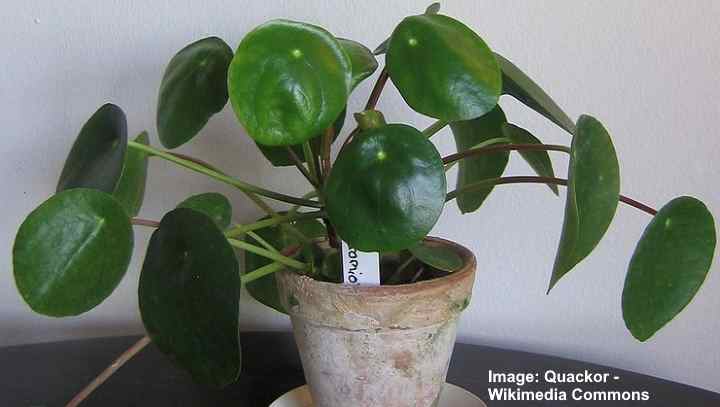
To properly care for your pilea plant, use a well-draining soil to prevent root rot
To care for your Chinese money plant properly, grow it in a potting mix with excellent drainage. Well-draining soil ensures that excess moisture in the soil doesn’t damage roots. The potting medium for growing Pilea peperomioides should be a combination of potting soil, peat moss, and perlite.
A well-draining potting medium should partially dry out between waterings. If the soil is too dense, the roots will be constantly damp, putting your plant at risk of root rot or fungal diseases. However, the potting mix needs to retain some moisture for healthy growth.
To create the ideal potting mix for your Chinese money plant, mix equal parts of a light houseplant soil, peat moss, and perlite. This type of medium will allow air to circulate better and water to drain quicker. If you notice that water tends to pool on the soil surface or takes a while to drain, repot your plant with a light potting mix.
How to Water Pilea peperomioides (Pancake Plant)
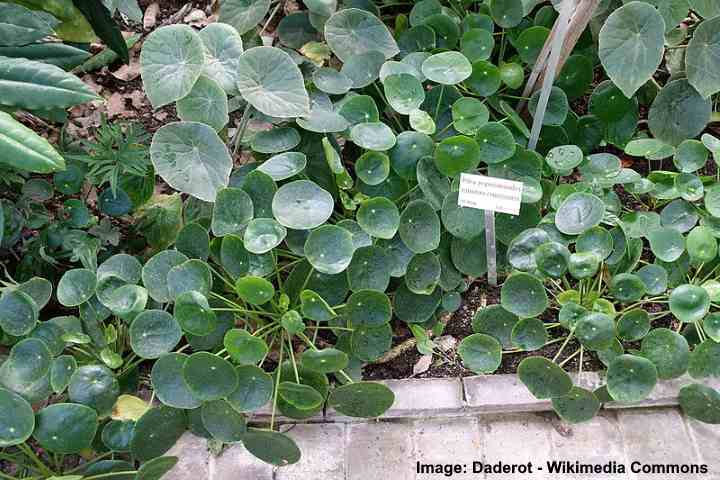
Thoroughly water your pancake plant when the top soil dries out and allow all the water to drain out
The most crucial aspect of Chinese money plant care is proper watering. Only water the plant when the top 1” to 2” (2.5 – 5 cm) is completely dry. Thoroughly water the plant by drenching the soil until water drains out the bottom. You should only water a Pilea plant as often as the soil dries out.
Rather than stick to a strict watering schedule, let the soil dryness be your guide. Firmly press on the soil to check for dryness. If there is any moisture, wait until the soil dries before watering. Generally, you should water your money plant more often in summer and less frequently in winter.
When watering a pancake plant—or any type of houseplant—always thoroughly water the soil. Deep watering ensures the roots are properly hydrated to stay healthy. Each time you soak the soil, allow all the water to drain out. So, it’s a good idea to check that the water doesn’t gather in the saucer under the pot.
Watering your houseplants correctly also means to avoid watering often and shallow. This type of watering creates a damp environment on the soil surface. Frequent, shallow watering puts your graceful houseplant at risk of fungus gnats or white plant soil mold. Also, the roots will never get enough moisture, and your plant can suffer from under-watering.
It is always best to err on the side of caution when it comes to watering. Chinese money plants can withstand a little drought rather than over-watering.
Chinese Money Plant Care: The Right Temperature
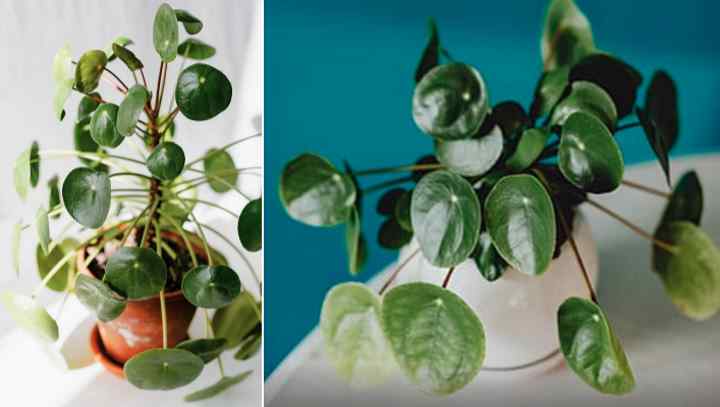
Grow your Chinese coin plant in average room temperatures and avoid sudden extremes of temperature
Pilea peperomioides plants grow well in a temperature range of between 60°F and 75°F (15° – 23°C). Generally, growing Chinese money plants in average room temperatures is ideal for the fastest growth. The most important care tip is to avoid sudden extremes of temperature and try to keep the room temperature even.
The challenge when caring for your pancake plant is in summer or winter. The hot sun can quickly heat rooms and stress your delicate houseplant. In winter, household heating can cause Chinese money plants to droop if they are too close to a radiator. Also, indoor heating tends to dry out the air. So, getting air moisture levels right is essential for plants to grow well.
In temperate zones, you can grow potted Chinese money plants outside. Warm days and moist air provide the perfect environment for these delightful plants to thrive. The minimum temperature for Pilea peperomioides is 50°F (10°C). So, bring the containers inside when the nighttime temperatures start to drop.
Getting Humidity Right for Pancake Plant (Pilea peperomioides)

Pilea peperomioides needs high humidity to grow well
Adequate humidity is one of the essential care requirements for healthy Chinese money plant growth. Indoor household air tends to be drier than the plant’s tropical native habitat. Your Pilea plant needs at least 50% humidity to grow well. To get humidity levels right, mist your plant, use a pebble tray, or a room humidifier.
Here are some top care tips to keep the air humid enough for your tropical houseplants:
- Mist the leaves—Use a fine spray to mist the leaves and increase humidity for your plant. All you need is to fill a spray bottle with filtered water and mist every other day.
- Place on a pebble tray—Create a humidifying tray by putting a layer of small stones in a tray. Pour water in the tray until it’s half-way up the stones. Put the Chinese money plant on the pebbles to humidify the plant naturally.
- Use a room humidifier—If you have several tropical houseplants, a room humidifier is a great solution. The unit will keep the room humidity at suitable levels for Pilea peperomioides to thrive.
Another way to care for your Chinese money plant is to wipe the leaves with a damp cloth. Cleaning the money plant leaves this way gets some much-needed moisture on the leaves. You also remove dust from the shiny circular leaves, which helps the plants to photosynthesize better.
You will find that you’ll have to adjust your watering and humidifying schedule in winter. Heating tends to cause air to be too dry. Also, houseplants grow slower and require less water. So, water less often in winter and make sure humidity levels are high.
How to Fertilize Chinese Money Plant for Healthy Growth

Feed your pilea plant monthly during spring and summer with a diluted fertilizer
Feed a Pilea peperomioides plant monthly with a diluted houseplant fertilizer to provide enough nutrients. Regular fertilizer helps boost growth, keeps the foliage green and vibrant, and improves your plant’s health. The best kind of fertilizer for pancake plants is an all-purpose one. Remember only to feed the plant during the growing season—spring and summer.
Chinese money plants don’t have a lot of feeding needs. Generally, diluting a 20-20-20 type of fertilizer by half should be adequate.
It’s good to be aware that mineral salts can build up in the potting soil. In time, these salts can cause root burn and affect the plant’s growth. So, it’s important to flush the soil every so often. To get rid of excess minerals, gently run water through the soil for two to three minutes. Allow all the water to drain and put the plant back in a bright location.
Like most houseplants, Pilea peperomioides plant growth slows down in winter. So, from fall until early spring, don’t fertilize your plant. You only need occasional watering when the soil is dry and regular misting to increase humidity.
Pruning Chinese Money Plant
Chinese money plants can benefit from pruning to get a bushier appearance. To prune your Pilea plants, trim off the top stems if they start getting too long. To encourage bushy growth, pinch off young shoots after a bud. You should also trim off dead or decaying leaves and stems.
Propagating Chinese Money Plant
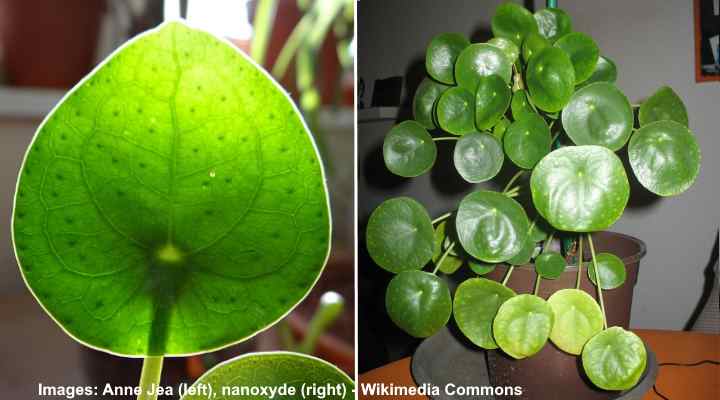
Chinese coin plant can be easily propagated by planting the small plantlets grown from the mother plant
One of the benefits of Chinese money plants is that they are easy to propagate. Small plantlets grow from the roots of the mother plant. You can separate these to grow new Pilea plants. Very soon, you can have more of these charming houseplants in your room.
How to propagate a Chinese money plant:
- Look for small plantlets growing from the soil.
- Follow the stem below the soil for about 1” (2.5 cm).
- Using a clean, sharp knife, cut the baby plant free.
- Put the small plant in a jar of water and wait for a few weeks until roots appear.
- Transfer to a small pot that has the appropriate potting mix in it.
Repotting Chinese Money Plant
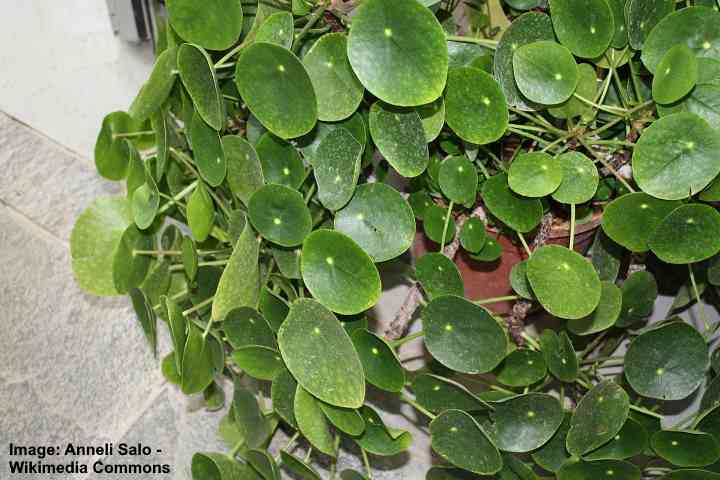
Your circled leaf pilea plant will benefit from repotting once in a while to prevent it from becoming rootbound
Repot a Chinese money plant in the spring to prevent the plant from becoming rootbound. Repotting a Pilea allows you to refresh the potting soil and check for signs of root damage. To repot a pancake plant, choose a planter that is 1” to 2” (2.5 – 5 cm) larger than the current one.
How can you tell if it’s time to repot a Chinese money plant? Here are a few signs:
- Roots are poking out the drainage holes.
- Water drains slowly because roots are filling the container.
- The plant starts growing slower than usual because the roots can’t get nourished.
How to repot a Chinese money plant:
- Gently ease the plant and root ball from the container.
- Remove excess soil and untangle the roots.
- Inspect the roots for signs of damage such as brown, mushy roots. Trim as necessary.
- Half-fill a new, larger pot with the appropriate Pilea potting mix.
- Place the money plant in the new pot and fill the remaining space with the potting soil.
- Thoroughly water the plant and place it in a bright location, away from direct sunlight.
Caring for Chinese Money Plant: Pests

Getting rid of pest infestation quickly is a prime care requirement for your pilea plant
One of the beauties about growing Chinese money houseplants is that they are quite resistant to pests. However, small pests such as aphids and thrips can infest your plant. If you notice signs of any houseplant pests, it’s essential to take quick action. These pesky “bugs” can quickly destroy a plant and infest other houseplants.
Signs that your pretty plant has a pest infestation include drooping stems, yellow leaves, or curling leaves. You may even spot the minuscule creatures if you look up close under the leaves.
Many natural household remedies are excellent at getting rid of spider mites, gnats, aphids, mealybugs, scale, and thrips. For the best advice, please read my article on how to get rid of bugs in houseplants.
Proper Chinese Money Plant Care: Diseases
Tropical houseplants such as the Chinese money plant are generally resistant to disease. The most common problem when caring for Pilea plants is root rot. However, this plant disease is preventable if you water your plants properly. To prevent fungal or bacterial diseases, always water your plant when the soil is partly dry.
If your Chinese money plant looks like it’s dying, it could be due to diseased roots. To try and revive a dying Pilea, repot it with fresh, sterile potting soil. Don’t water the plant until the top 2” (5 cm) is completely dry.
FAQ About Chinese Money Plant (Pilea peperomioides)

Is Chinese money plant poisonous?
It’s unlikely that a Pilea peperomioides is toxic to cats or dogs. The American Society for the Prevention of Cruelty to Animals lists plants from the family Urticaceae in their list of non-toxic plants for cats. (1)
Does the Chinese money plant clean the air?
It’s likely that Chinese money plants can help to purify the air in a room or office. Studies have shown that air quality in rooms that have several plants is better that rooms that have none. Also, plants add to the aesthetics of any interior, creating a calmer, more peaceful atmosphere. (2)
How can I make my money plant grow faster?
Put your money plant in a bright location, shielded from direct sunlight to speed up growth. Watering when the soil is partly dry, keeping humidity levels high, and feeding monthly all help to encourage excellent growth.
Why is my Chinese money plant dying?
Brown leaves, yellow leaves, or a drooping Chinese money plant are signs that something isn’t right. Check to make sure that the soil isn’t waterlogged. Also, inspect for signs of pests if your plant looks like it about to die.
Related articles:
